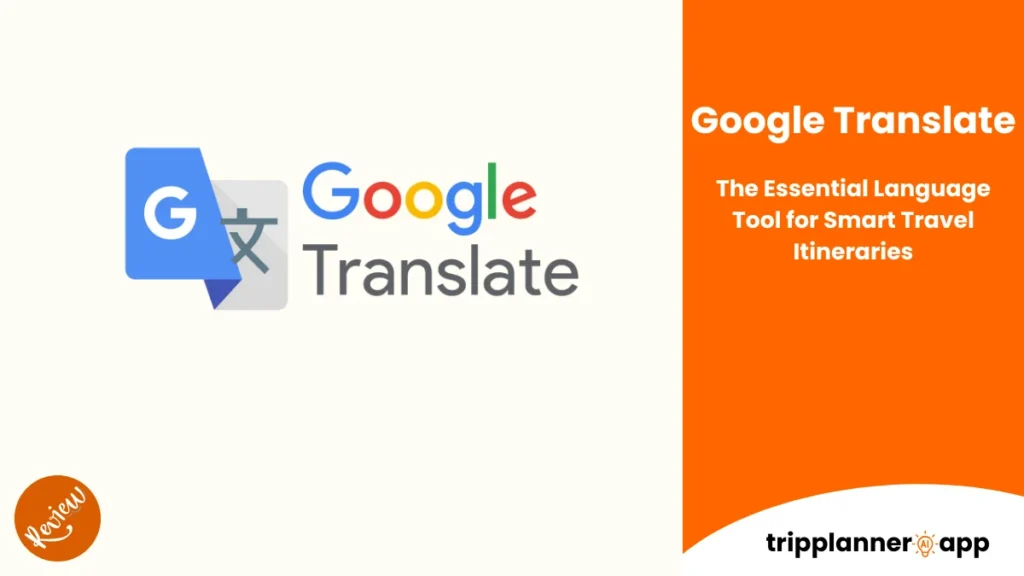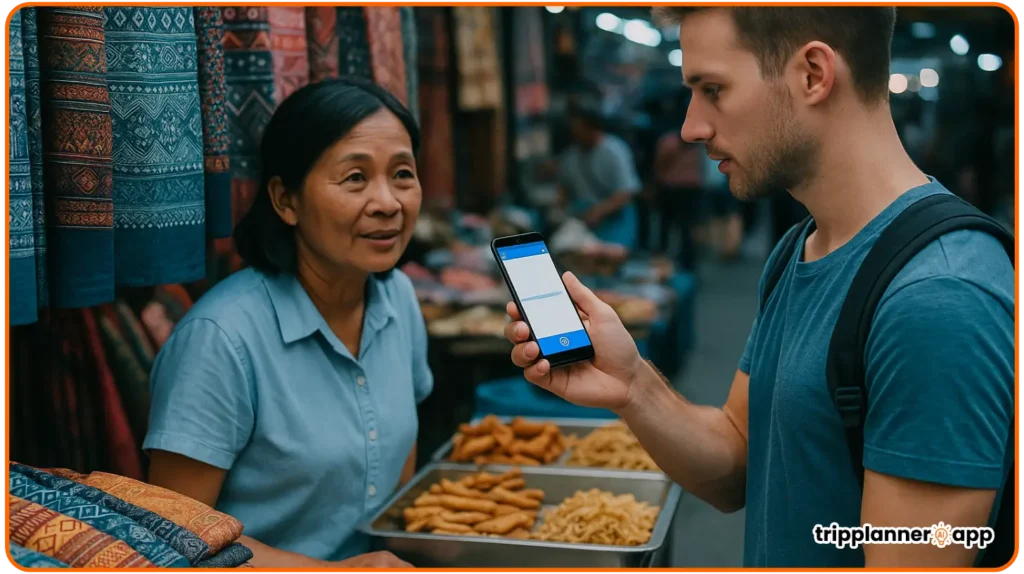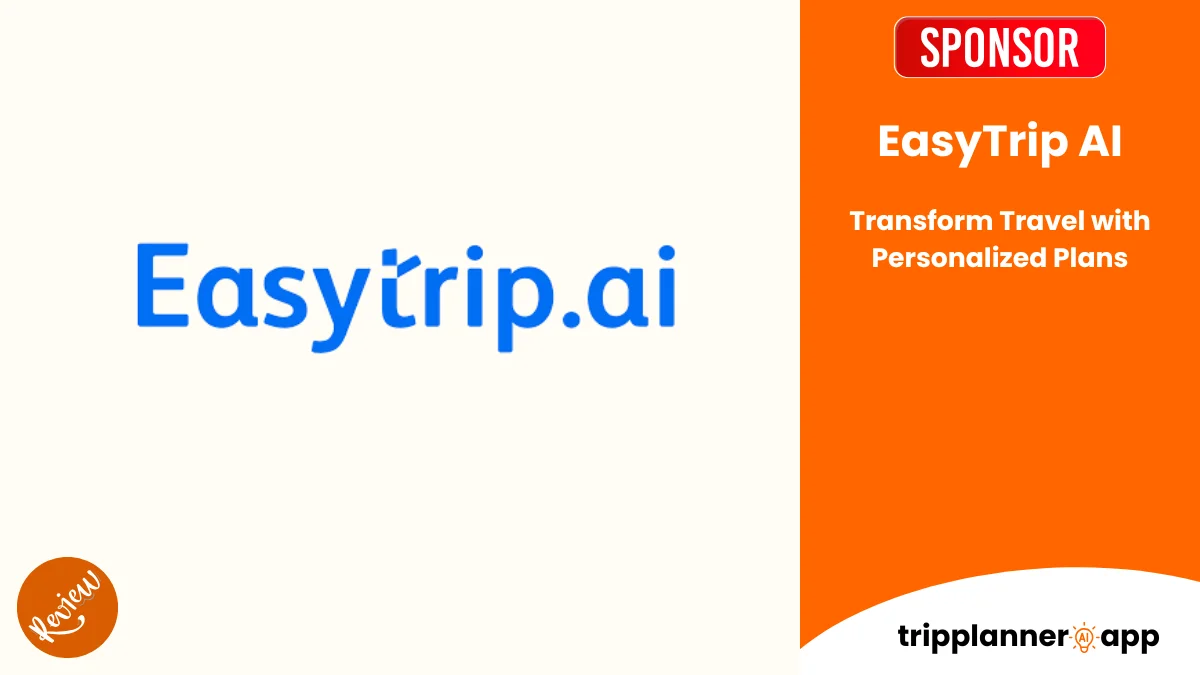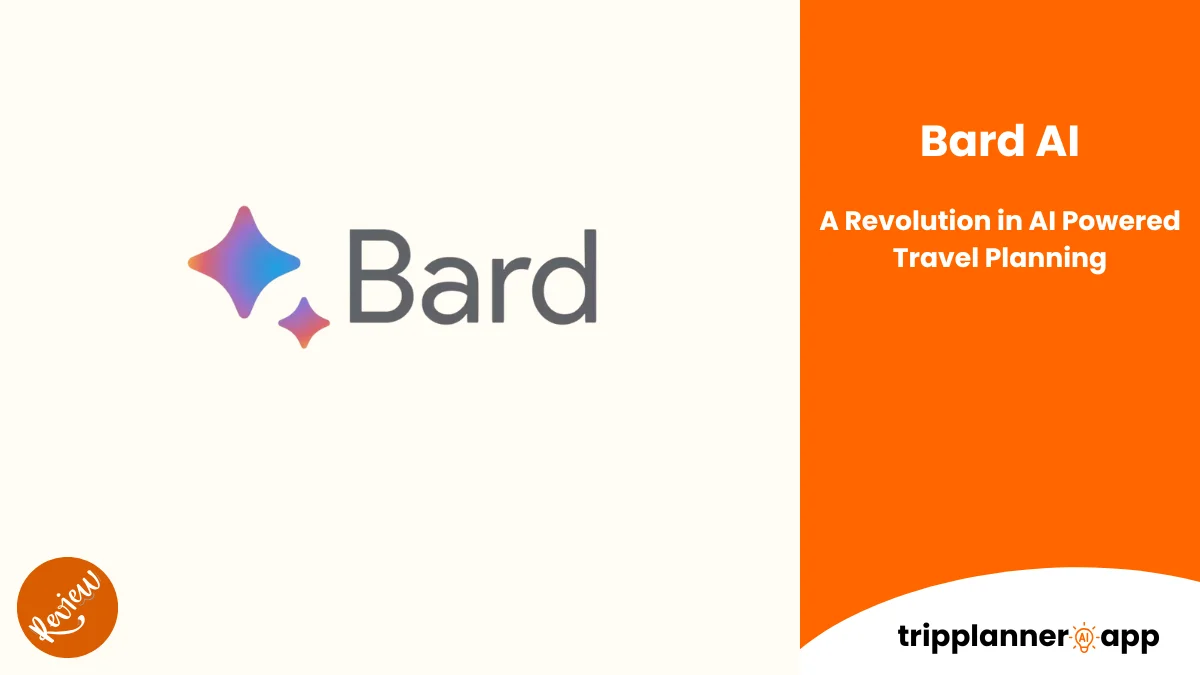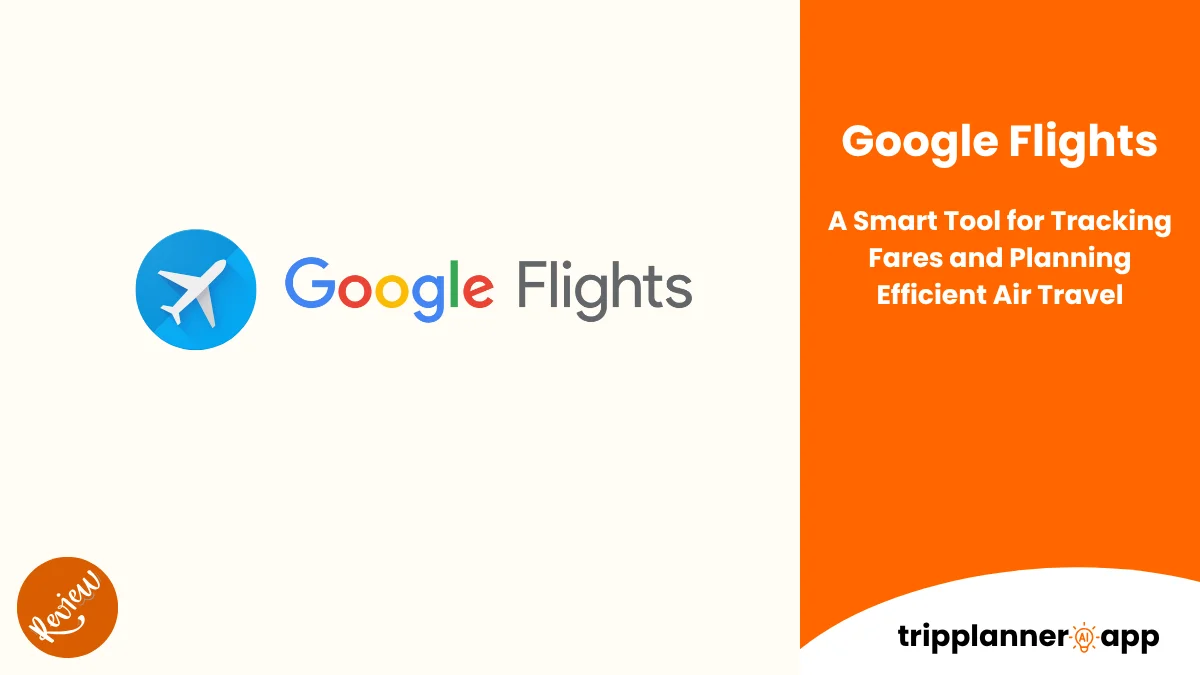In an increasingly interconnected world, navigating cultural landscapes while traveling has never been more complicated or rewarding. As tourists venture into regions where the local language is often a significant barrier, efficient communication becomes imperative. This is where Google Translate steps in as a game-changer, offering instant translation and seamless interaction opportunities for travelers. Imagine standing in a bustling foreign market, surrounded by an array of vibrant textiles and delicious street food, yet unable to comprehend the local dialect. The frustration of miscommunication could dampen the experience unless you have Google Translate ready at hand. With just a few taps, this robust tool transforms your travel woes into a smooth journey filled with delightful encounters.
Introduction
Google Translate has revolutionized the way we communicate across language barriers. As we dive deeper into how it enhances AI-generated travel itineraries, it’s crucial to understand the foundational role of language support in trip planning. Mastering the nuances of local dialects or leveraging language tools can significantly elevate the travel experience, enriching interactions and cultural exchanges. This article will illuminate the extensive features of Google Translate, demonstrating its invaluable contribution to enhancing travel itineraries and facilitating unforgettable adventures.
Why Language Support is Crucial in Trip Planning
Language support is essential to travel planning, fundamentally shaping tourists’ interactions with local culture and environment. From understanding menus to asking for directions, the effectiveness of a traveler’s experience often hinges on their ability to communicate. Here’s a closer look at the various dimensions where language support plays a pivotal role:
- Enhanced Interaction: Proficiency in the local language, or access to translation tools, can vastly improve communication with locals. Engaging in simple conversations can bridge the gap between tourists and residents, fostering meaningful connections and enriching cultural experiences. Travelers who make an effort to learn local phrases often find that their warm gestures are reciprocated with friendliness and offers of assistance.
- Improved Navigation: For instance, imagine a traveler arriving in Tokyo without the ability to read Japanese characters. Without effective language support, simple tasks like navigating the subway system or ordering food can become daunting. However, with apps like Google Translate, users can translate signs in real time or understand complex menu items, significantly improving their ability to navigate unfamiliar environments.
- Reduced Misunderstandings: Miscommunication can lead to misunderstandings and inconvenient situations, such as ordering the wrong dish or missing vital travel information. Language support systems help mitigate these risks and allow for clarifying questions, which enables travelers to verify essential details, thus ensuring a smoother journey.
- Access to Collaboration: Businesses in the tourism sector that provide multilingual services such as translated brochures, websites, or trained staff forge a more inclusive environment for travelers from diverse linguistic backgrounds. For example, hotels that use translation services for customer interactions can better cater to international guests, promoting satisfaction and loyalty.
- Cultural Understanding: Language acts as a gateway to immerse into a local culture. When travelers understand basic phrases or cultural contexts, they often engage more profoundly and respectfully with local customs. This not only enriches their own trip but also fosters goodwill and cultural exchange.
Overall, effective language support allows travelers to engage more meaningfully with the communities they visit, fostering connections that enhance their overall experience. As such, planning trips with language resources in mind becomes invaluable.
How Google Translate Enhances AI-Generated Itineraries
Google Translate is at the forefront of breaking down language barriers, particularly in AI-generated travel itineraries. The integration of Google Translate into these itineraries provides valuable language support across various aspects of the travel experience. Here are some key ways in which Google Translate enhances travel planning:
- Automatic Translation: AI trip planners using Google Translate can convert itinerary details, hotel information, and local attraction descriptions into the user’s preferred language. Travelers no longer need to puzzle over foreign texts as they can access information in their native tongue, which enhances comprehension and engagement. For example, a traveler planning a trip to a country like Spain would find it convenient that their itinerary is readily available in Spanish, ensuring that they fully grasp the details.
- Real-time Adaptation: The ability of Google Translate to provide real-time translations ensures that no matter where a traveler is, they can communicate effectively. This capability is particularly beneficial for travelers who may encounter last-minute changes in plans, requiring them to interact with local services or vendors quickly.
- Contextual Learning and AI Recommendations: Google Translate employs advanced algorithms to analyze user preferences, allowing AI-powered travel planners to offer contextual suggestions that resonate with users’ interests. For example, a traveler searching for restaurants in Paris can receive suggestions in French, enhanced by Google Translate to ensure that the names and descriptions are easily understood.
- Cultural Engagement: Beyond simple word translation, Google Translate enhances cultural immersion by providing background information about destinations in users’ native languages. This adds richness to travel experiences, offering insights into local customs, cuisine, and attractions that might be overlooked in raw translations.
- Simplified Logistics: Planning a trip can involve multiple stages, including booking flights, securing accommodations, and making dinner reservations. Google Translate simplifies these processes by ensuring that each step is captured accurately. For instance, it can provide translations for users in real-time as they fill out forms or communicate with hotels, leading to more precise and effortless planning.
As the travel landscape evolves, integrating Google Translate into AI trip planners can significantly enhance user experiences for international travelers, allowing them to navigate foreign environments with ease and confidence.
When to Use Google Translate in the Travel Journey
Throughout your journey, there are several key instances when Google Translate can be your best travel companion. Here’s a breakdown of when you should turn to this invaluable tool:
- Pre-departure Research: Before you board that flight, familiarize yourself with your destination. Google Translate can assist in comprehending local languages when researching accommodations, attractions, or regional customs. Being equipped with this knowledge enhances preparedness and helps smooth out any potential issues that may arise during your trip.
- During First Contact with Locals: Upon arrival at your destination, your first encounters whether at the airport, hotel, or local market can be crucial. Use Google Translate to ask for directions or discuss your stay with hotel staff. Engaging in conversation right away can create an inviting and warm atmosphere, essential for enjoying your travel experience.
- Dining Experiences: This is a significant area where Google Translate shines. When dining out, translating menus can prevent regrettable choices or misunderstandings about food allergies. Not only does it allow you to explore the local cuisine confidently, but it can also lead to delightful culinary experiences.
- Exploration and Leisure Activities: As you explore museums, cultural sites, and local attractions, Google Translate can provide context by translating signage and descriptions, enriching your understanding and appreciation of the sites you visit. For instance, reading contemporary art descriptions or historical markers in your language can deepen your immersion into the local culture.
- Emergency Situations: In case of an emergency be it a lost passport or a health issue having access to Google Translate can make all the difference. You can quickly articulate your situation to local authorities or medical personnel, ensuring a prompt and appropriate response to your needs.
By strategically utilizing Google Translate throughout your travel journey, you can navigate unfamiliar landscapes with greater ease, ensuring enriching experiences that transcend language barriers.
Key Features for Travelers
Google Translate encompasses a comprehensive set of features tailored for travelers, making it an essential tool in navigating foreign landscapes. In the upcoming sections, we will highlight these core features that enhance the overall travel experience, catering to diverse linguistic needs.
Text Translation in 100+ Languages
One of the standout attributes of Google Translate is its support for text translations across over 100 languages. This extensive range allows travelers to engage in seamless communication regardless of their destination. Whether one is visiting bustling markets in Bangkok or quaint cafés in Paris, Google Translate provides the necessary linguistic support.
- Instantaneous Text Translation: Users can instantly input text for translation, making it convenient to understand signs, user manuals, and local documents. This is particularly useful when attempting to decipher critical travel information.
- Support for Low-res and Endangered Languages: Beyond the major languages, Google Translate offers support for low-res and endangered languages, providing vital communication options in remote or traditionally less-traveled regions. This inclusivity fosters a better understanding of global cultures and fills gaps where other services might fall short.
- User-Friendly Interface: The app provides an easy-to-navigate user experience, allowing travelers to translate text rapidly. Users simply need to type in or copy and paste the text, making the translation process simple and efficient.
- Batch Translation: Travelers can also upload entire documents or multiple sentences for batch translation, which can be invaluable when needing to comprehend longer texts or contracts in a foreign language.
- Use Cases: Text translation can be applied in diverse scenarios, such as understanding local laws, navigating local customs, or ensuring that business transactions are clear and precise.
In essence, the support for over 100 languages cements Google Translate as an invaluable resource for travelers, enabling them to connect effortlessly while broadening their understanding of the places they visit.
Instant Camera Translation for Signs and Menus
The instant camera translation feature offered by Google Translate represents a significant leap forward in navigating foreign environments. It allows users to translate text literally by pointing their smartphone cameras at signs, menus, or any text in their surroundings.
- Quick and Intuitive Use: Activating the camera mode is straightforward. Users select the camera icon within the app, point their camera at the desired text, and watch as the translation appears in real time. This is especially useful when dining out, as users can immediately understand menu items without needing to ask for clarification.
- Enhanced Navigation: Travelers can point their cameras at street signs, transit maps, and information boards to receive immediate translations. This capability significantly reduces confusion and enhances the travel experience, making it easier to navigate unfamiliar territories with confidence.
- Cuisine Exploration: The ability to track down local delicacies is another highlight of this feature. By hovering over restaurant menus, diners can educate themselves on the dishes offered, allowing them to make informed decisions without the fear of ordering inedible meals.
- Cultural Immersion: This feature not only aids in practical scenarios but also facilitates cultural engagement. By interpreting local advertisements, historical markers, and public art, travelers can gain insights into the communities they’re visiting, heightening their exploratory experience.
- Limitations: While immensely beneficial, it’s important to note that camera translations may sometimes misinterpret stylized fonts or complex graphics. Users should approach translations with this in mind and be prepared for occasional inaccuracies.
Overall, the instant camera translation feature makes Google Translate a versatile ally for travelers, enhancing cultural exchanges and simplifying the complexities of international travel.
Conversation Mode for Real-Time Dialogue
Google Translate’s conversation mode streamlines communication between travelers and locals by facilitating real-time dialogue. This innovative feature serves as an effective tool for forging connections in cross-cultural settings.
- Bi-directional Speech Recognition: Travelers can engage in two-way conversations by speaking into the app. Google Translate recognizes voice input from both speakers, instantly converting spoken language into the target language. This fluidity allows for natural interactions without the need for constant pauses to read translations.
- Ease of Use: Activation of the conversation mode is simple users select the microphone icon within the app and speak. The app accurately captures the spoken language and translates it instantaneously, which is especially invaluable when asking for directions or negotiating with vendors.
- Interactive Engagement with Locals: This feature empowers users to ask questions, clarify doubts, or simply engage in friendly conversations, significantly enhancing the traveler’s experience. Communicating with locals authentically often results in more profound and memorable experiences.
- Cultural Exchange: By facilitating conversations, travelers can learn about local customs, traditions, and the surrounding environment directly from residents. This engagement opens doors to insights that might not be found in guidebooks, allowing travelers to gain a deeper appreciation of their destination.
- Limitations: While conversation mode is powerful, it can struggle with accents or rapid speech. Users might need to speak slowly or articulate clearly for the best results.
In conclusion, conversation mode transforms the way travelers interact with locals, enriching their experiences through meaningful dialogues and cultural exchanges.
Offline Translation for No-Internet Zones
For many travelers, access to the internet is not guaranteed, especially in remote areas or smaller towns. Google Translate addresses this challenge effectively with its offline translation capabilities.
- Accessible Offline Mode: Users can download specific language packs for offline access, enabling translation without an internet connection. This feature is crucial for journeys into remote regions, where connectivity may be limited or nonexistent.
- Support Across Multiple Languages: With 100+ languages available for offline use, travelers can ensure they have support in various locales, enhancing their communication abilities in any situation.
- Streamlined Communication: Offline translation empowers users to decipher signs, menus, or essential directions seamlessly, allowing them to navigate with confidence, even without internet access.
- User Preparedness: Prior to embarking on journeys to areas with uncertain connectivity, travelers can pre-load essential phrases or documents. This preparation results in smoother interactions, ensuring they can communicate effectively when it matters most.
- Usage Recommendations: Depending on travel plans, it’s advisable for users to evaluate which languages might be most useful to download, focusing on regions where they will be traveling.
Overall, offline translation significantly enhances traveler autonomy and adaptability in unfamiliar environments, reducing reliance on internet connectivity while maintaining effective communication.
Phrasebook and Saved Translations
The phrasebook feature within Google Translate presents numerous advantages for travelers, providing easy access to frequently used phrases when navigating conversations in foreign languages.
- Customized Phrasebook: Users can save essential phrases or frequently used translations directly within the app, creating a personalized resource for quick reference. This capability is particularly useful for travelers who find themselves repeating similar queries, such as ordering food or asking for directions.
- Structured Organization: The saved translations can be organized categorically, making it easy to navigate essential phrases in high-pressure situations or conversations.
- Historical Reference: Google Translate also keeps a history of previous translations. This feature facilitates easy access to commonly used phrases during a trip without needing to retype them.
- Enabling Quick Responses: The phrasebook function empowers travelers to retrieve commonly used expressions instantly, saving time and reducing anxiety during interactions.
- Practical Applications: This feature is especially useful for travelers with limited language proficiency, equipping them to engage in essential interactions without feeling overwhelmed.
In summary, the phrasebook and saved translations feature is a valuable addition to Google Translate, enhancing effectiveness when managing language barriers during travel.
Read reviews of other AI trip planners and support tools to help you plan smarter.
EasyTrip AI: Transform Travel Planning with Personalized Itineraries
EasyTrip AI is reshaping the future of travel planning with its sophisticated AI-powered itinerary planning capabilities. In a world where personalized experiences are valued over standard travel packages, EasyTrip AI [...]
How Google Translate Supports AI Trip Planners
Having explored the key features for travelers, it’s time to delve into how Google Translate integrates seamlessly with AI trip planners, significantly enhancing the effectiveness of travel planning.
Translating AI-Generated Itineraries to Local Languages
AI trip planners can leverage Google Translate to ensure that every aspect of travel planning is accessible in the traveler’s preferred language, thus bridging communication gaps.
- Automatic Translation of Itineraries: Users can receive localized itineraries that are not only in their language but also incorporate contextual relevance. This ensures that travelers understand their schedules, including timings, locations, and activities planned.
- Multilingual Information Access: Travelers that venture into regions with less common languages benefit significantly from the ability to access translated itineraries directly. Inclusion of local terms and expressions enhances the user’s understanding and engagement with the itinerary.
- Real-time Updates: As plans change, AI trip planners can use Google Translate to automatically update itinerary translations, ensuring that travelers always have the latest information readily available in their language.
- Cultural Context: Providing users with itineraries enriched by translations of local phrases or cultural insights creates a deeper level of travel engagement. Having localized content means tourists can plan their adventures with sensitivity to local cultures.
- Practical Outcomes: As an outcome, travelers can follow their tailored itineraries with enhanced ease, leading to enriched experiences that go beyond surface-level tourism.
Understanding Destination Descriptions in Native Context
Along with itinerary translations, Google Translate assists AI trip planners in ensuring that destination descriptions are comprehensible and contextually relevant for travelers.
- Localized Descriptions: By utilizing Google Translate to convert destination descriptions into the user’s native language, trip planners make these descriptions more relatable and accessible. This ensures that travelers have a clear understanding of the local sights and attractions before they arrive.
- Cultural Nuances: AI trip planners can pull in localized phrases and cultural references through Google Translate, offering users insights that resonate deeply with the culture of their destination.
- Enhanced Engagement: When travelers can understand the significance of a local monument, site, or attraction in their language, they’re more likely to engage fully with their experiences.
- Improved Decision-Making: Equipping travelers with accurate and comprehensive information allows them to make informed decisions on what attractions to prioritize or explore during their trip.
- Practical Examples: By understanding a destination’s local customs or stories, travelers immerse themselves more effectively, often resulting in authentic experiences and memorable encounters.
Customizing AI Prompts for Better Multilingual Suggestions
The integration of Google Translate into AI travel planners also facilitates the enhancement of multilingual suggestions based on user preferences.
- Customized Query Analysis: Through AI-driven translation capabilities, Google Translate helps analyze user input to ensure that suggestions align closely with travelers’ expectations and interests.
- Automatic Contextual Suggestions: By tailoring prompts to generate relevant recommendations for events, dining options, or activities in the user’s preferred language, trip planners can offer localized insights.
- Diverse Cultural Recommendations: Personalized itineraries become richer when AI planners incorporate Google Translate to enable nuanced recommendations that consider the cultural context of each destination.
- Multilingual Engagement: Users can query local options in their languages, further tailoring their travel plans to enhance comfort and ease of understanding.
- Practical Outcomes: As a result, travelers can receive comprehensive and sensitive feedback on their preferences, contributing to a tailored travel plan that is both enjoyable and functional.
Enhancing Local Interaction with Translated Itinerary Snippets
In addition to broader itineraries, Google Translate can enhance local interactions by providing users with translated itinerary snippets that can be shared with locals.
- Easy Communication of Plans: Travelers can communicate where they plan to go or engage in conversations about their interests by sharing relevant itinerary snippets in the local language, facilitated by Google Translate.
- Enhanced Engagement with Locals: This sharing fosters mutual understanding and builds rapport between travelers and residents. Locals are often delighted to help travelers navigate their recommendations, leading to richer experiences.
- Facilitated Cultural Exchange: When travelers can discuss their itineraries with locals, it opens doors for cultural exchange, allowing residents to share insights about hidden gems and local customs.
- Building Connections: Establishing open lines of communication through these snippets promotes authentic conversations that bring about enriching cross-cultural exchanges.
- Practical Uses: This feature can be particularly advantageous during group tours or events where travelers wish to discuss specific parts of their itinerary, making it easier to involve local perspectives.
Real Travel Use Cases
Having examined how Google Translate supports AI trip planners and enhances the travel experience, we can further explore practical applications of this tool in everyday travel scenarios.
Reading Street Signs, Menus, and Museum Labels
Traveling can be thrilling, but misreading signs or menus can spoil the experience. Google Translate excels at helping users navigate local text, allowing for engaging explorations of new places.
- Street Signs: Users can simply point their camera at street signs to quickly obtain translations, eliminating confusion and ensuring travelers remain on the right path.
- Understanding Menus: Dining in new cuisines often comes with curiosity yet can be overwhelming. Google Translate provides clarity by translating menus, enabling diners to make informed choices without anxiety.
- Museum Labels: When exploring local museums or galleries, understanding context enhances appreciation. Translating museum labels and descriptions of exhibits allows travelers to gain insights into cultural artifacts.
- Locational Context: Navigating through new places becomes a smoother experience when users can understand directional cues and warnings, ultimately promoting safety and confidence.
- Practical Outcomes: By leveraging this capability, travelers can explore their surroundings with ease and interest, resulting in memorable excursions.
Asking for Directions or Booking Help
Another critical aspect of travel involves the need for assistance whether finding the right path or making reservations. Google Translate provides substantial support in these situations.
- Asking for Directions: By typing or speaking into Google Translate, users can articulate their needs clearly in the local language, allowing locals to respond helpfully.
- Booking Reservations: When attempting to secure a table at a popular restaurant or confirming accommodations, having access to Google Translate can clarify interactions and prevent miscommunications.
- Informed Interactions: Engaging with locals about transportation options, flight details, or event inquiries becomes more straightforward, as users can easily understand and act upon guidance they receive.
- Natural Conversations: When travelers feel equipped to ask questions and express needs, it creates opportunities for spontaneous, informative exchanges that enhance their experiences.
- Practical Benefits: The ability to effectively ask for help not only simplifies logistics but also enriches travelers’ experiences by establishing connections with locals.
Translating Hotel Policies or Tour Notes
In the hospitality sector, ensuring guests fully comprehend policy and details is vital. Google Translate enhances communication by translating essential information at hotels and during tours.
- Translating Hotel Policies: Many visitors might be overwhelmed by check-in procedures or cancellation policies presented in a foreign language. Google Translate simplifies this process, allowing hotels to communicate policies quickly and clearly.
- Enhanced Tour Notes: For tour guides and operators, providing translated itineraries ensures that all participants understand the schedule and expectations, enhancing the overall guest experience.
- Improving Customer Satisfaction: Simplifying language barriers in these contexts fosters a welcoming environment, as guests know exactly what to expect without confusion.
- Adaptability: Both hotels and tour operators benefit from the flexibility Google Translate offers, allowing them to create tailored communications that cater to diverse audiences.
- Practical Implementation: As a result, both travelers and service providers can navigate expectations efficiently, leading to improved traveler satisfaction and service quality.
Bridging Gaps Between Travelers and Locals
Google Translate serves as an essential bridge connecting travelers with the local community, fostering relationships that vastly improve the cultural experience.
- Reduced Language Barriers: The ability to communicate effectively with locals enhances the travel experience by enabling tourists to ask questions, negotiate prices, or seek recommendations.
- Building Friendships: As travelers interact with residents using translation tools, opportunities arise for forming friendships, cultural exchanges, and shared experiences.
- Civic Engagement: Understanding local concerns or initiatives becomes feasible as travelers can engage in conversations around community interests or events.
- Local Insights: Often, locals can provide valuable knowledge about the best undiscovered spots or hidden gems that are not highlighted in guidebooks critical information that transforms ordinary trips into extraordinary adventures.
- Significance: Whether it’s through casual conversations or meaningful exchanges, Google Translate fosters connections that deepen travelers’ understanding of the communities they visit.
Combining Google Translate with Other Tools
As we reflect on real travel use cases, it’s vital to consider how Google Translate integrates with other tools to enhance overall travel experiences.
Pair with Google Maps for Location + Language Aid
Combining Google Translate with Google Maps significantly improves navigation experiences for travelers, particularly those visiting unfamiliar locales.
- Real-time Location Assistance: Google Maps allows travelers to access translated information about their desired destinations or routes, reinforcing understanding regarding transportation options and timing.
- Voice Guidance: When users click on the speaker icon next to location names in Google Maps, they can hear pronunciations in the local language this feature boosts navigational confidence when speaking with drivers or locals.
- Integrated Tools: The synergy between Google Translate and Google Maps streamlines travel logistics and communication efforts, reducing potential errors while searching for locations.
- Offline Access: Furthermore, when travelers download language packs and maps, they remain prepared for areas void of internet access, ensuring seamless navigation and communication.
- Expected Outcomes: Ultimately, travelers can confidently navigate unfamiliar territories and communicate effectively, leading to enriched explorative experiences.
Integrate into Google Docs, Calendar, or Travel Apps
Leveraging Google Translate alongside productivity tools like Google Docs and Google Calendar optimizes trip planning for travelers.
- Collaborative Planning: Google Docs allows users to share itineraries and notes with friends or fellow travelers, utilizing Google Translate to ensure all members are on the same page regarding details and discussion points.
- Multilingual Event Scheduling: For those working across cultural lines, integrating Google Calendar with Google Translate aids in creating multilingual invitations, thus unifying communication among diverse teams.
- Travel App Integration: Many travel apps also support Google Translate integration, streamlining interactions by providing on-the-go language support for reservations, directions, and other travel-related inquiries.
- Simplified Coordination: The seamless connection of travel planning tools with translation capabilities fosters collaboration and promotes smooth communication across various travel activities.
- Practical Implementation: As a result, travelers enjoy heightened efficiency and improved organization, leading to more enjoyable and rewarding trips.
Use Alongside AI Tools Like ChatGPT or TripPlanner.ai
When considering the integration of Google Translate, its compatibility with AI tools like ChatGPT or TripPlanner.ai enhances user interaction.
- Dynamic Conversational Assistance: Using Google Translate with AI tools facilitates real-time conversation support, allowing users to generate coherent dialogues in multiple languages seamlessly.
- Personalized Trip Suggestions: These integrations can help personalize itineraries based on user interests by analyzing previous interactions and preferences while providing translations that resonate with travelers.
- Interactive Platforms: Engaging with AI tools that incorporate Google Translate opens up avenues for direct communication, providing instant answers to travel-related inquiries.
- Streamlined Experience: This coordination reduces the cognitive load on travelers, as they can retrieve information and suggestions in their preferred language without additional modification.
- Outcome: By leveraging these technologies together, travelers gain a more intuitive and enjoyable travel experience that maximizes their engagement with new cultures.
Cross-Check Translations for Clarity in Travel Bookings
While Google Translate represents an invaluable tool for understanding languages, it is important to approach translations with a critical eye especially during travel bookings.
- Consult Multiple Sources: Verifying translations through additional resources can provide clarity and ensure critical information remains accurate.
- Contextual Accuracy: Review translations for contextual understanding of complex phrases or idioms that may not translate well should be cross-checked for correctness to avoid misunderstandings during travels.
- Use of Human Verification: Employing a human translator for essential documents, such as contracts or travel confirmations, may be advisable to prevent misunderstandings that could lead to complications.
- Cultural Sensitivity Check: Understanding local idioms or culturally specific terms can greatly enhance communication. Users are encouraged to familiarize themselves with variations across language pairs to improve interaction.
- Practical Implications: By adhering to these practices, travelers can seamlessly enhance their experiences and maintain awareness of potential translation pitfalls.
Pros and Limitations
As we conclude, it is essential to summarize the pros and limitations encapsulated in this exploration of Google Translate.
Pros: Fast, Free, Widely Supported, Easy to Use
Google Translate boasts several significant advantages which contribute to its prevalent use by travelers worldwide:
- Instantaneous Translations: The tool facilitates quick translations, allowing users to understand content across multiple languages instantaneously, a major asset for travelers in fast-paced environments.
- Accessibility: Being free and available on smartphones and computers increases its usability, enabling individuals from various socio-economic backgrounds to benefit from its services.
- Extensive Language Support: With support for over 240 languages, Google Translate is versatile in addressing diverse linguistic needs globally, which is crucial for fostering cultural exchanges during travels.
- User-Friendly Interface: Easy to navigate and intuitively designed, Google Translate caters to users of all ages and technical backgrounds, making language assistance readily available for everyone.
- Expected Outcomes: Overall, these advantages empower travelers to engage confidently with new cultures through effective communication.
Limitations: Not Always Context-Aware, Idiom Challenges
Despite its many benefits, Google Translate does have notable limitations that travelers should keep in mind:
- Contextual Understanding: A critical downside is that Google Translate often lacks nuanced contextual awareness. It may misinterpret sentences that require a deeper understanding, leading to inaccuracies in translations.
- Challenges with Idioms: Common idiomatic expressions and culturally specific phrases often elude Google Translate, resulting in awkward or confounding translations, which could misrepresent the user’s intent.
- Dependence on Internet Access: While offline operation is available, full functionality typically requires a stable internet connection, which can be a hurdle in remote locations or during travel.
- Variability Across Language Pairs: The quality of translations can fluctuate drastically across different language pairs. Travelers may find that translations are far less reliable between less common dialects.
- Practical Implications: By being cognizant of these limitations, travelers can better navigate the tool’s usage and remain prepared for potential encounters with translation challenges.
Best Practices: Cross-Verify Critical Information
To maximize Google Translate’s utility, travelers should adopt best practices when engaging the tool:
- Use Multiple Sources: Always engage various translation tools or consult local speakers to verify accuracy and reliability when independently interpreting critical information.
- Review for Context: Users should ensure context aligns well with their translations. Providing surrounding context while using Google Translate can yield better results.
- Post-Editing: For important translations such as loan applications or legal documents consider reaching out to professional services for human translation to ensure precision.
- Prepare for Common Phrases: Prior to travel, ensure key phrases are pre-loaded into the app. This proactive step allows for improved efficiency when requiring immediate responses.
- Expected Outcomes: By adopting these practices, users can make the most of Google Translate, optimizing their communication and enhancing their travel experiences.
Tips for Using Google Translate on the Road
As we wrap up this comprehensive overview, it’s important to share practical tips for effectively using Google Translate while traveling.
Download Language Packs in Advance
Preparation is key. Travelers should consider pre-downloading language packs for the languages they intend to use.
- Effortless Access: Before departure, users should open the Google Translate app, ensure they are connected to the internet, and download relevant language packs for offline use this facilitates seamless translation even without connectivity.
- Strategic Downloads: Prioritize downloading languages that will be most useful based on travel itinerary and destinations. Focus on practical phrases that may come in handy during essential interactions.
- Regular Updates: Google updates language packs periodically for accuracy, so checking for updates ahead of your trip is a prudent practice.
- Limited Storage Space: Download only necessary languages to conserve device storage. Tailoring selections ensures an efficient app performance.
- Practical Implementation: This preparation minimizes reliance on internet access while maximizing capabilities for communication during travels.
Use Voice Input for Faster Interaction
Another feature that enhances user experiences while on the road is Google Translate’s voice input capability.
- Quicker Interactions: Utilizing voice input allows users to speak queries or phrases aloud, resulting in faster translations when time is of the essence.
- Real-time Responses: This feature is particularly useful when speaking with locals in busy settings where typing may not be practical or quick enough.
- Hands-free Functionality: Voice input frees users from the constraints of typing; they can engage more naturally with surrounding environments or fellow travelers.
- Cultural Engagement: Improving verbal communication by practicing pronunciation through voice translation can also serve as an effective language learning tool.
- Practical Applications: By employing voice translations, users can enhance communication fluency, especially in essential interactions, making their travel journeys smoother and more engaging.
Leverage Camera for Menu, Labels, or Transit Info
Using the camera function to read menus, labels, or transit information can significantly facilitate navigation and communication.
- Easily Translate Text: Users can simply point their camera at documents, menus, or signage to receive instant translations, making comprehension much easier.
- Navigational Assistance: This feature offers clarity on street signs, helping users navigate without undue confusion.
- Dining Experiences: Capturing images of menu items allows diners to explore local cuisine with confidence, ensuring they understand what they’re ordering.
- Informative Signs: When traveling via public transportation, this function enables travelers to interpret rules and schedules effortlessly, alleviating compounding stress during transit.
- Expected Outcomes: When users leverage camera technology for translation, they can navigate locales with confidence while thoroughly engaging with local culture.
Learn and Save Essential Phrases Before Departure
Being prepared before embarking on your journey by learning and saving essential phrases can significantly ease communication with locals.
- Identify Common Scenarios: Travelers should assess and learn phrases that are most applicable to their situations, such as greetings, directions, and food-related queries.
- Effective Saving: Utilizing Google Translate to save essential phrases will ensure travelers can retrieve needs quickly, especially in high-pressure situations.
- Practicing Pronunciation: As users save phrases, taking the time to practice pronunciation can improve confidence when engaging with locals.
- Reduces Anxiety: Knowing key phrases allows users to interact comfortably, fostering connections that enhance the overall experience.
- Practical Application: This preparation enhances travel experiences and engages users in local cultures, contributing to overall satisfaction.
Final Thoughts
In conclusion, Google Translate functions as an indispensable tool, enhancing the travel experience and reducing language barriers for millions around the globe. As we’ve explored throughout this discussion, its diverse features including instant translations, camera capabilities, and offline operation provide travelers with the resources they need to communicate effectively and immerse themselves in new cultures. By leveraging its attributes, travelers can navigate foreign languages, explore culinary delights with confidence, and foster meaningful interactions with locals.
However, it is essential to acknowledge its limitations and adhere to best practices to ensure accuracy and clarity. Equip yourself with essential tools and knowledge, and embark on your travel journey with greater assurance, knowing that Google Translate is there to support you every step of the way.
Still Looking for the Perfect AI Trip Planner?
Discover all the best AI-powered trip planning tools in one place. Whether you need a fast itinerary builder, a chat-based assistant, or a browser extension — we’ve got you covered!
Browse All AI Trip Planners
